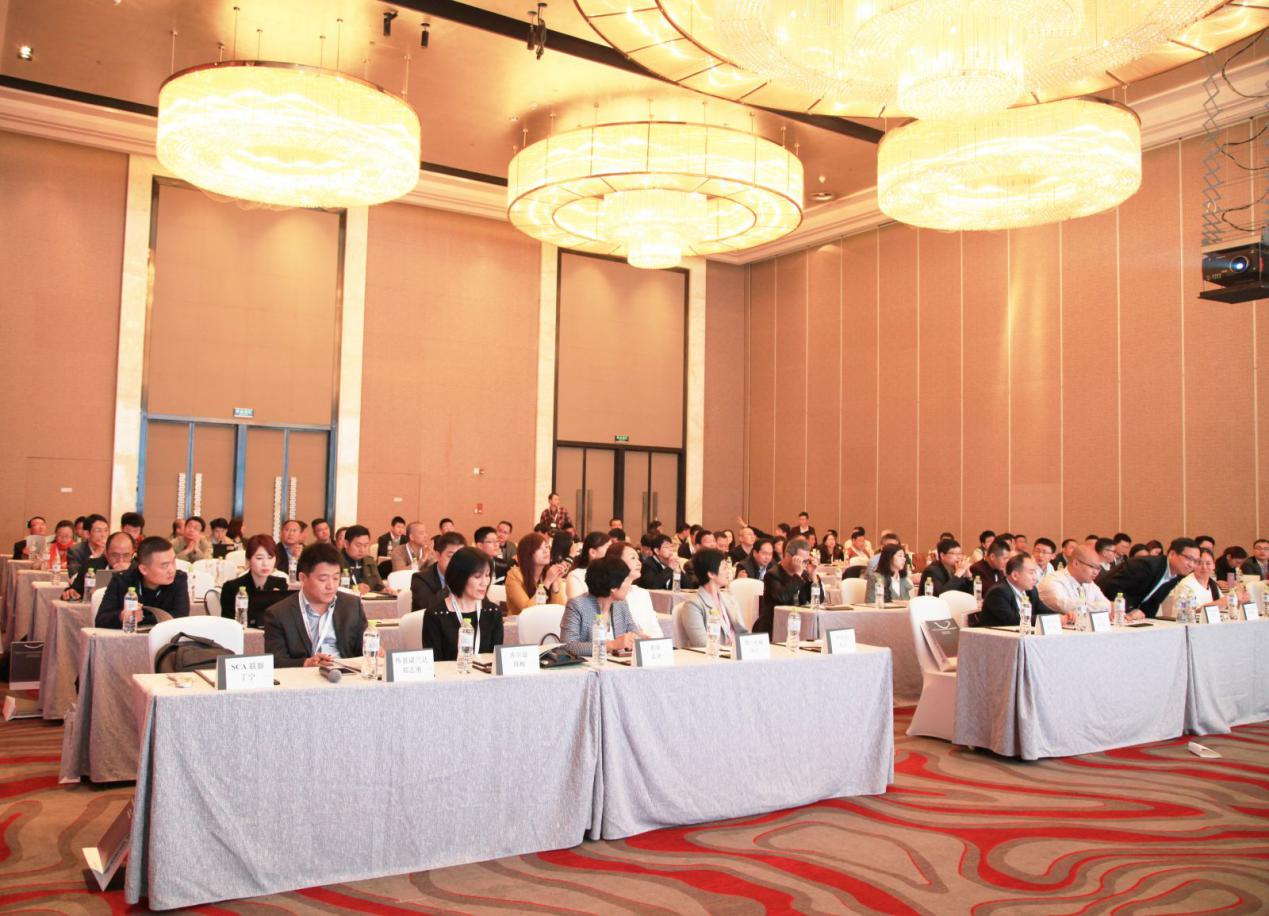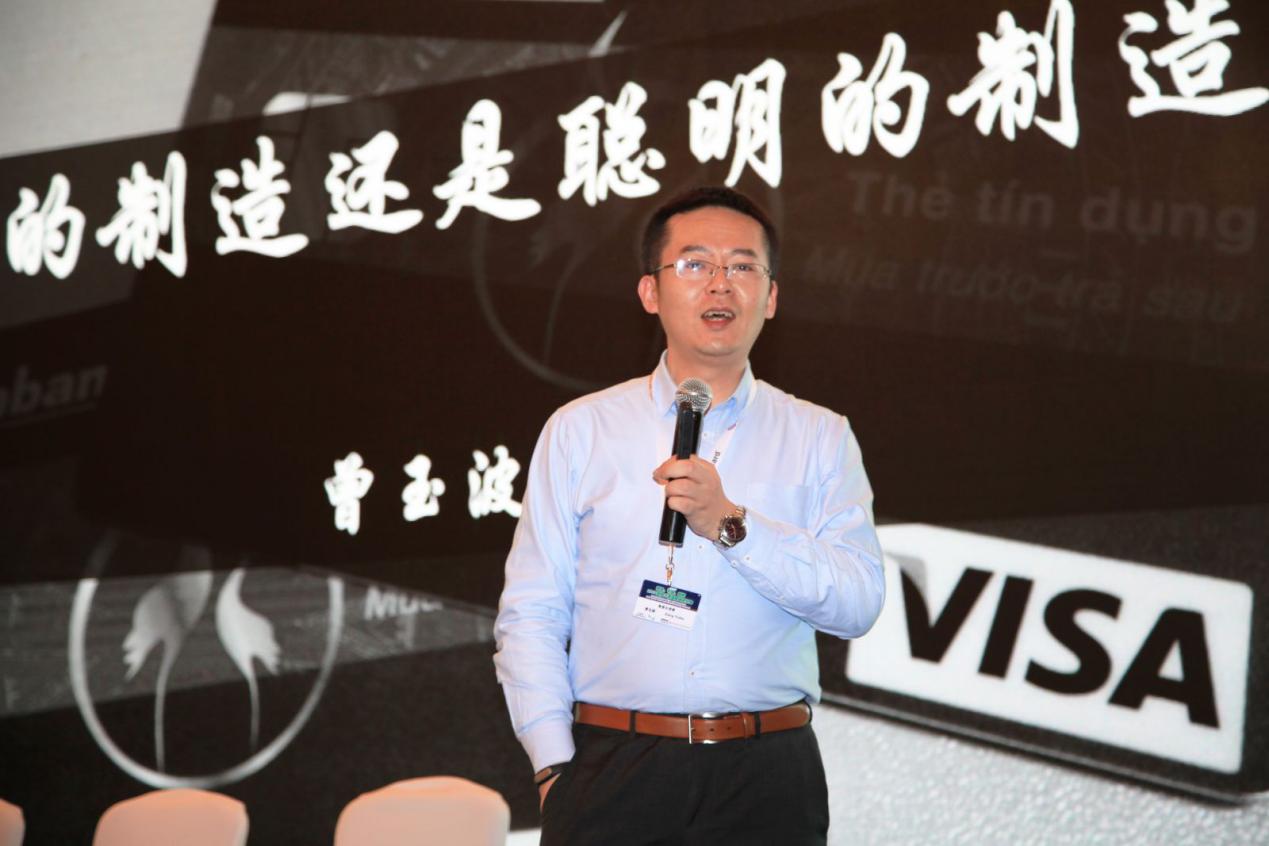Source: Author: Datetime: 2016-04-01 Hits: 4410
On Mar. 25, 2016, the “Energy Conservation and Innovation – 2016 Smart Card Lean Manufacturing” hosted by Neil Ding, founder of the SCA and General Manager of Shanghai Aoh Smart Technology Co., Ltd., wrapped up successfully in Chongqing, China.

This seminar attracted 26 smart card manufacturers from across the country; up to 99% of China’s top ten mainstream card manufacturers participated in it; also gathered were up- and downstream enterprises related to smart card manufacturing, including chip manufacturers, equipment manufacturers, card body providers, testing and certification laboratories and card quality standards regulators, among others. They heatedly discussed with clients about the long-term trends of the smart card industry, and brought the latest products and solutions to the smart card manufacturers, which promoted innovation in the products of the smart card manufacturers.
In addition, the seminar also invited Mr. Zeng Yubo, dubbed as "Mr. Industry 4.0", a well-known industrial smart manufacturing expert, to provide a keynote speech on how to become lean for the smart card industry. In his speech, he tackled many questions: What conditions are necessary for concrete deployment and implementation of lean manufacturing? Why do card manufacturers want to implement lean manufacturing at this state? What is their current stage in lean manufacturing? What is their plan for the future development of lean manufacturing?

■Regarding telecom smart cards, eSIM will be a challenge for the industry. Operators of many countries are actively following the technologies and standards of eSIM.
■In 2016, GSMA is expected to introduce eSIM standards.
■User attitudes towards eSIM are mixed because, on the one side, they can enjoy better services at a cheaper price. On the other side, they worry that if a phone is lost, card replacement might be too troublesome.
■In addition, eSIM also has an impact on the business model of the smart card ecosystem. If regulators allow, phone makers could gain more say in where the rules of the game will change, and consumers’ selection of services might be affected.
■Some people think mobile payments might be a great challenge to bank cards. But, in fact, the current mobile payments on cell phones must be done by binding a physical bank card, and furthermore, due to the different properties of cards and cell phones, in certain situations a phone still cannot replace card properties.
■Some members of the audience believe that from a certain point of view, the current mobile payments actually boosted bank card issuance, because each bank's credit cards have their own service advantages. If one wants to use the services provided by different bank cards, one needs to bind all the cards to the cell phone, so one needs not only a cell phone supporting mobile payment, but also a cool card, to enjoy convenience, coolness and discounts.
■Due to the precedent of long-term use of bank cards, consumers have already developed habits that they do not quickly give up, not to mention bank cards provide evidence recognized by law. However, if problems occur with mobile payment, consumer complaints will be even more passive.
■In the digital age, bank cards need to increase their individual differences to meet the multiple needs of cardholders, issuers and partners and improve their own competitiveness. Therefore, the future development direction lies in the differentiation of high quality cards in terms of functional and physical aspects.
■Cards regulators also want to see differentiation, rather than a reckless savage price war.
■Challenges currently facing the Transport & City Card: First, the multi-standard dispute; second, the extended functions of the card are affected by other industries, especially in micro payments.
■Transport & City Card has had further development in interconnectivity. There are 72 interconnected cities throughout China according to the standards of the Ministry of Housing and Urban-Rural Development of China. The number is expected to expand to 100 in 2016 in accordance with the standards of it’s Ministry of Transport.
■By the end of 2015, social security cards steadily rose to the goal of the Five-year Plan. It is estimated that in 2016, the issuance will significantly decrease by about 30%.
■As the social security card is to be loaded with more and more functions, the demand for card stability is getting higher. In order to encourage more cardholders to fully use the social security card, card manufacturers could from their own perspective think thoroughly about how to help card issuers to increase cardholders’ willingness to use the cards and activate more functions.
■In 2015, the "Amendment to the Criminal Law of the People’s Republic of China" allows the social security card to prove identity. Definitely, it will pose increasingly higher safety and security requirements to the cards in future.
■Mergers and acquisitions are on the increase in smart card industry. In addition, smart card enterprises have already been investing in non-smart card fields to expand the market.
■Smart card products have a marked trend in cross-border business. A card needs to provide functions that can meet the different needs of issuers from various industries. Therefore, the physical carrier of a card also needs innovation to avoid the pitfall of homogenization.
■It is very dangerous for card manufacturers to simply reduce cost of a certain production process, or to blindly decrease the purchase cost of material, because where there is no profit, it is impossible to produce a better service, and that would pose its own products at risk. We have to make differentiated products whose demand will be in small volume but multi-batches. How to meet this demand in the production process is worth of smart card manufacturers’ pondering.
■To face the challenges of the industry, we need to be energetic and to embrace the trends and opportunities without evading problems or impeding the trends. Only by doing so is the right way for the development of smart card companies.
■Polycarbonate material currently has not yet met large-scale use in China. Therefore, its characteristics and applications still need to be further exploited by smart card companies. PC material has some unique properties to allow card manufacturers to produce products of more differentiated features and to add values to the products.
■UV inks have obvious advantages in energy saving. Especially in the current context of energy-saving and environmental protection set as China’s national strategic objectives, card manufacturers can think about how to better use these inks. Because the rapid cure rates of UV inks translate into high production efficiency, the next step is to think about how to collaborate with the next step after printing to fully automate the entire production line.
■Smart card manufacturers should look to shift their focus from the manufacturing cost of products to the value of the card itself. As long as you meet customers’ needs and give them high-value card products, they will be willing to pay for them. The card manufacturers also work to break free from the original price war quagmire, and go on the right path of competitive differentiation
■Sophisticated equipment can achieve high quality and efficient production. Card manufacturers must actively communicate with manufacturing equipment providers to discuss problems encountered in card production, so that the equipment can achieve the optimal state of running.
■Some experts say that personality, function, fashion, taste, counterfeit and security should be the future development trends of high-end cards. It is also a trend for cards to be designed for different groups of people with personalized needs in mind and provide customers with more value in return from card products.
■Card manufacturers now want to shift from 8-pin to 6-pin chips and for its module encapsulation, in addition to the traditional antenna picking out and welding technique, conductive heat activated tape can also be used. As modules are getting smaller, the potential risks in the original encapsulation process are reduced.
■As to the printing process, in order to meet the needs of small volume production, card manufacturers can also choose to use digital printing devices. Digital printing technology is being improved to adapt to more needs from bank cards.
■New technologies and solutions may not have an absolute advantage in price when they are launched at first. However, after all aspects are taken into account, they will show an advantage of cost saving in solving problems and issues that may arise for the current and future situations.
■Experts in the field of card personalization express that the smart card industry in China is now faced with overcapacity. Does it mean all the companies in the industry are losing money? When we look at other industries, such as the iron and steel industry, we find that the most profitable companies are not those large-scale steel manufacturers but those that produce personalized products. Some small factories with differentiated products enjoy the most profits in the entire industry. Because of this, a shift from price to value recognition is now the focus for every company.
■The dual-interface card with dual coupling technique can to a certain extent avoid the connection failure of antenna caused by card bending. The reduction of its module thickness compared with the ordinary dual interface modules enables a better visual appearance.
■A shift from 8pin to 6pin is the trend for card manufacturers. 6-pin chip gives more space for card design, simplifies card appearance and saves more cost than before.
■Lean manufacturing is a management problem, not a technical production problem.
■Lean manufacturing is not done by hiring a couple of engineers to apply the arrangements of some lean manufacturing workshop to your own equipment, or by simply adapting your production line according to some theories. Lean manufacturing should be a complete, systematic and comprehensive process of implementation in accordance with the methodology, and needs to be prepared for a long-term battle.
■To achieve lean manufacturing, the managerial team should first accept this concept and plan to carry it out in the long term.
■What should a smart card manufacturer do to achieve lean manufacturing? The answer is "Begin to do it tomorrow, and then stick to it for ten years."
If one desires long-term development in the smart card industry, enthusiasm must be an important factor, which is also the main emphasis of this seminar. While at the conference, we said a lot of new products currently on the market are not disruptive enough to the smart card industry, the industry should also be aware of the maxim "Hardships died of happiness." Lean manufacturing is the right way of development that meets the current market demand, but it is also a subject that needs to be pondered by companies in the long-term. It is our hope that we smart card companies gather together to sum up annually the challenges we are facing in manufacturing, and hold active discussions with our counterparts in the conference to come up continued positive energy for the entire industry and new ways for our industry to thrive.
